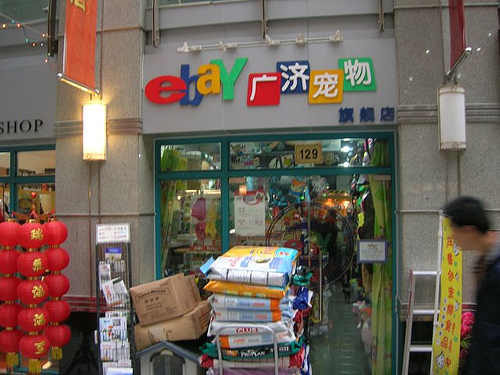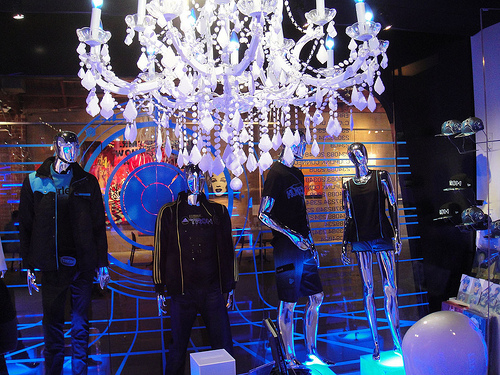Reckoning with high rental fees, the onslaught of online shops and multinationals, brick-and-mortar fashion retailers are realising the perks of a pop-up shop.
Wait, pop-up what?
A pop-up is a store that takes up retail space temporarily (i.e. a few days to several months) as opposed to one taking on a year- or decades-long lease. The setup effectively frees the lessee from the constraints of a lengthy contract.
Consequently, the brand permeates more locations in a shorter span of time. It allows the owner to push the limits of creativity on a lower budget. At the same time, landlords benefit from rejuvenated activity in their retail spaces.

eBay’s popup store. Image credit: Jérémi Joslin (Source: Flickr)
Fashion start-ups make up many of the pop-up stores in Australia. Big-time labels, used to long-term leases, are—ironically—frequent adopters of the concept.
In March, Sydney-based designer Kym Ellery opened a pop-up ‘boutique’ along Rue Saint-Roch in Paris. The following month, up-and-coming label Ampersander set up a Sydney pop-up showcasing ethically produced clothes and fabrics for Mercedes-Benz Fashion Week.
Children’s label Alfie Apparel is also in the midst of establishing a pop-store, to be preceded by a website launch.

Tron: Legacy Pop Up Shop at Royal/T in Culver City, CA. Image credit: pop culture geek (Source: Flickr)
Not having stores
Speaking from a panel during Melbourne Spring Fashion Week, Australian Centre for Retail Studies director Sean Sands reiterated that rent and wages constitute the bulk of expenses for fashion retailers.
“We’re seeing retailers look to online channels or even selling purely online and not actually having stores,” he said.
Wading into the online and pop-up fray has increasingly made sense even to Australia’s biggest retailers.
Myer, for one, is not averse to charting the down-with-the-kids route. The department store chain not only runs an online operation but a monthly digital magazine called Emporium.
Ever adaptable, Myer has also established pop-up locations in CBD railway stations and other highly trafficked areas.
From Sept. 2012 to Mar. 2013, Myer’s online store pulled in 90 million page views. Not coincidentally, the company profited $88 million for the same period.
According to the Council of Textiles and Fashion Industries, online retail sales in Australia are rising by 20 percent annually.
Social media optimisation
Lana Guineay, editor of the Australian version of ASOS, thinks that social media optimisation should be a non-negotiable for anyone looking to build retail websites and other unorthodox storefronts.
“Social media gives instant access to a worldwide audience. Genuinely engaging with people through these platforms is key,” she told The New Zealand Herald.
“The beauty of being online is that it is so immediate, conversational and engaging…You can be fast and reactive, allowing you to try new things, fail fast, change and add product quickly to adapt to customer needs.”
ASOS is a worldwide phenomenon. The web-based fashion retailer attracts 23.2 million visitors every month.
Feeling the heat
Aside from the rise of overhead costs and digital stores, Australia’s physical stores are feeling the heat of another kind: multinational retailers.
H&M will go toe to toe with rivals Zara and Topshop when it opens in the continent in March 2014.
However, Sands believes smaller shops have the edge of being able to create more targeted products to locals or build ones around specific local events.
*Author’s Bio: Sharon Freeman is a professional freelancer who writes about clothing trends, fashion and about companies like High Tea with Mrs Woo
